Recent Articles
Popular Makes
Body Types
10 Things You Need to Know About the 2020 Ford Explorer

2020 Ford Explorer blue parked ・ Photo by Ford
The newly redesigned 2020 Ford Explorer SUV is one of the most anticipated vehicles of the year. The mid-size Explorer has always been a mainstay in the Ford lineup, so any new Explorer is an important vehicle. This version has been even more anticipated than others because it marks the Explorer’s return to a rear-wheel drive platform versus the previous generation that was based on front-drive crossover architecture.
As you’ll see from the following 10 things to know about the 2020 Ford Explorer, the re-boot to rear-drive offers a number of advantages. At the same time, the new Explorer retains virtually all the attributes that have made it the beloved choice of hundreds of thousands of buyers for more than three decades.
1. The 2020 Explorer is better looking than 2019 version.
Redesigned from the ground up, the all-new 2020 Ford Explorer has an exciting new look while at the same time being easily identifiable as an Explorer. After all, if you had America’s all-time best-selling SUV in your lineup, you wouldn’t let the new acorn fall very far from the tree.
Some key Explorer styling trademarks find expression in the new design, among them the “blacked-out” A-pillars and D-pillars and wide, body-color C-pillars. (The pillars are the metal portions of the body that support the roof.) The new rear-drive architecture is a key factor in enabling the Ford designers to push the envelope a bit. Changes to the SUV’s profile include a shorter front overhang (the portion of the body ahead of the front wheels) and more sloping roofline.
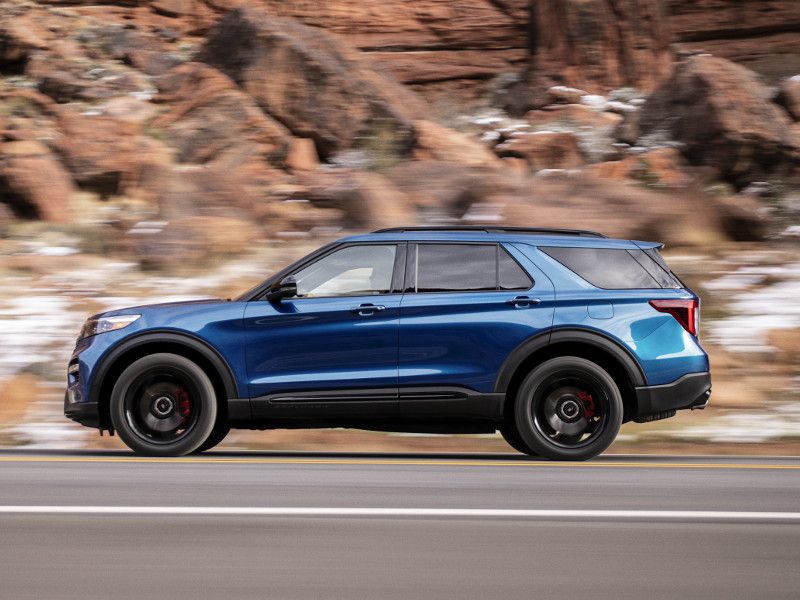
Photo by Ford
2. The 2020 Explorer has more standard features than ever before.
The all-new 2020 Explorer is, on average, only $400 more expensive than last year’s highly regarded model — yet it features more than a dozen new standard features. Like what? Well, like the power liftgate (something Ford execs say consumers were very high on), the 2.3-liter EcoBoost engine with an all-new 10-speed transmission, the 8-inch digital touch screen with SYNC 3, and the FordPass Connect Wi-Fi service for up to 10 devices.
Ford engineers also decided to specify individual captain’s chairs for the second row rather than a traditional three-person bench seat, which is now optional. The captain’s chairs fold out of the way for entry into the third row. Accommodating everyday items like drink bottles, to-go cups, and cellphones was a priority with the interior designers, so there are now three places in the center console that can accommodate a cellphone. In all, the new Explorer boasts 123 cubic liters of space to stow small items.
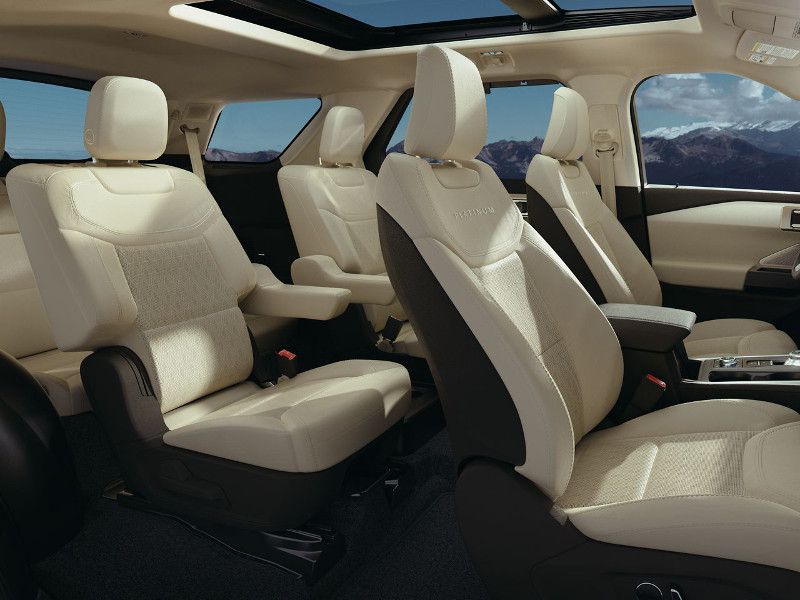
Photo by Ford
3. The 2020 Explorer has a more accommodating interior than ever.
Not only is the re-crafted cabin filled with features, but it also offers more quiet, comfort, and sheer space. A significant enhancement to interior quiet comes from the dual-wall dashboard made of two layers of a sheet-molded composite material with an air gap between that deadens unwanted engine sounds.
Meanwhile, the second-row seats feature a new mechanism that allows for easy access to the third row using just one hand, while redesigned ISOFIX anchor points allow child-seat installation in the second and third rows. With multiple grades, the Explorer offers a variety of interior trims, but even the most basic in terms of price are not very basic in execution. The top-level Explorer Platinum includes special leather seats and leather-wrapped steering wheel, dashboard, door rollovers, and armrests.

Photo by Ford
4. The 2020 Ford Explorer keeps you well-connected.
The Ford Explorer is all about hauling passengers in style and comfort, and contemporary passengers want to be connected 24/7/365. To enable that passengers in all three rows have access to FordPass Connect, a standard feature that delivers 4G LTE Wi-Fi for up to 10 mobile devices with a compatible wireless subscription service.
The system also gives drivers the ability to use their smartphones to lock, unlock, locate, and start their vehicles, and also monitor key vehicle diagnostics. Depending upon the trim level, some Explorers feature an available 10.1-inch touchscreen mounted vertically in the central area of the dashboard. The Ford SYNC 3 infotainment system has been redone to offer a more intuitive layout plus available features such as Apple CarPlay, Android Auto, and Waze navigation. Up to four USB ports, including the new type-C outlets, up to three 12-volt outlets, and a 110-volt outlet are also available.

Photo by Ford
5. The 2020 Explorer has powertrains for every taste.
One of the biggest appeals of the 2020 Ford Explorer is that it can be equipped just about any way you want. The is certainly true when it comes to the engine compartment. The lineup features a pair of EcoBoost entries — a 2.3-liter turbocharged in-line four-cylinder that is standard in the base, XLT, and Limited models and a 3.0-liter twin-turbocharged V6 that powers the Explorer Platinum.
We’ve seen Ford hybrid suvs in the past, but the 2020 Explorer Hybrid uses a new design and configuration to offer the performance and capabilities of the conventionally powered Explorers. The 3.3-liter V6 naturally aspirated engine combined with an electric motor produces 318 system horsepower. Lastly, for those with performance on their minds, there is a specially tuned 3.0-liter turbocharged V6 in the ST model.

Photo by Ford
6. The Explorer Hybrid model changes the paradigm.
Ford engineers told us the overall goal of the Explorer Hybrid was to duplicate the performance and capabilities of the conventionally powered version with no compromises. After lengthy tests of various Explorer models, we’d say they achieved their goal.
With a combined 318 horsepower from the hybrid system, the Explorer Hybrid is at least the equal of all but the ST in every driving situation we put it through, including off-roading. Neither interior volume nor ground clearance are negatively affected by the hybrid powertrain. The specially designed liquid-cooled lithium-ion battery is built into the Explorer chassis mounted below the second-row seats to preserve cargo and passenger space. At this writing, Ford has not announced fuel economy ratings for the hybrid model but said it expected an EPA-estimated range of more than 500 miles between gas station fill-ups.

Photo by Ford
7. The Explorer ST model is hot.
For those who desire some performance zip out of their SUV, the Explorer ST is the hottest ticket we’ve driven lately. At its heart is a specially tuned 3.0-liter EcoBoost engineered by the Ford Performance team that is projected to deliver 400 horsepower and 415 lb-ft of torque.
The engine is partnered to a quick-shifting 10-speed automatic transmission and standard four-wheel drive with traction control. Two levels of performance upgrades are available featuring niceties like larger brakes with vented rotors. The Explorer ST offers a Sport mode that alters the steering system, gas pedal response, holds gears longer, and shifts more quickly. It also sings to you, playing an enhanced engine note through the cabin. A top speed target for track drivers stands at 143 mph.

Photo by Ford
8. The 2020 Explorer has beefier towing capacities.
Among the many benefits of the Explorer's new rear-wheel drive configuration is more towing capability when properly equipped, regardless of engine.
Explorers fitted with the 3.0-liter EcoBoost V6 can now tow up to 5,600 pounds, a robust 12 percent increase over the 2019 Explorers with the 3.5-liter EcoBoost V6. Models outfitted with the 2.3-liter four-cylinder and Class III trailer tow package can tow up to 5,300 pounds, versus the 3,000 pounds of the 2019 Explorers that are similarly equipped. Even the Hybrid and ST editions have significant trailer towing abilities.
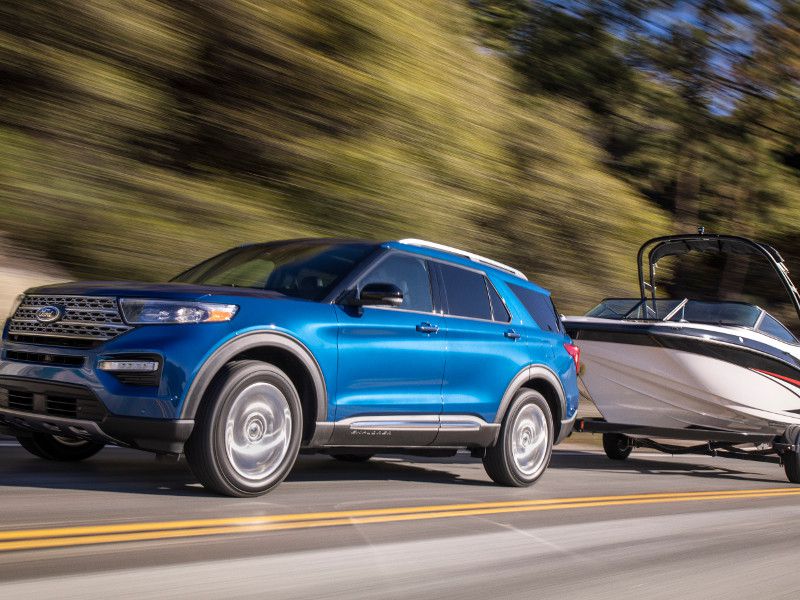
Photo by Ford
9. The 2020 Explorer offers improved off-road capabilities.
A rear-drive-biased platform offers significant advantages for off-roading, and Ford engineers expanded upon that by offering an available Terrain Management System with up to seven selectable drive modes.
Accessed through an easy-to-use dial in the center console, the various modes are accompanied by 3D animated graphics in the available 12.3-inch digital instrument cluster. Rear-wheel drive Explorer modes include normal, sport, trail, slippery, tow/haul, and eco. Vehicles equipped with intelligent four-wheel drive add a deep snow and sand mode for improved performance off-road. The four-wheel drive system is transparent to the driver, and though it doesn’t offer a two-speed transfer case, it excelled during our off-road driving tests.
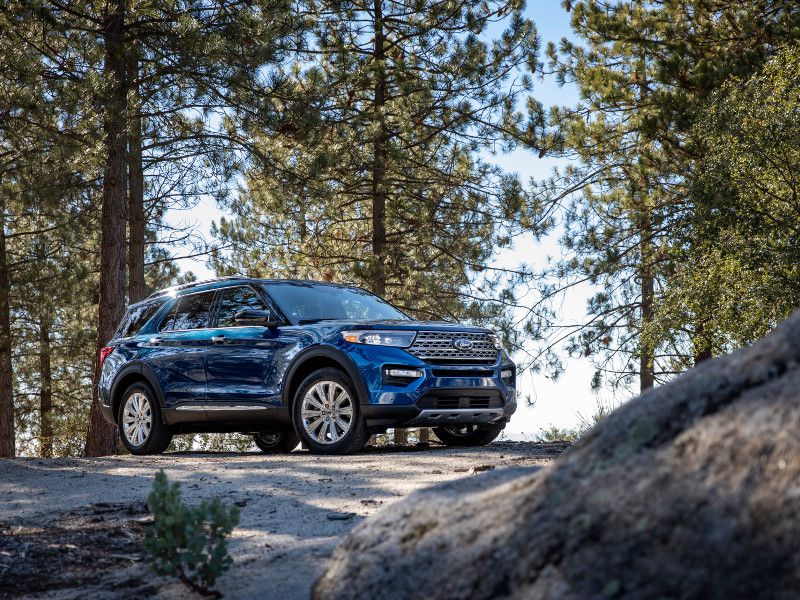
Photo by Ford
10. The 2020 Explorer offers a broad array of safety features.
The new Explorer comes with Ford Co-Pilot360, a standard suite of driver-assist technologies. Included among them are automatic emergency braking with pedestrian detection and a forward collision warning, blind-spot monitoring with a rear cross-traffic alert, lane-keeping assistance, a backup camera with a built-in lens cleaner, and automatic headlights with automatic high beams.
Additional available Ford Co-Pilot360 technologies include Evasive Steering Assist, which provides steering support to help avoid a collision, and Post-Impact Braking, which applies the brakes after a collision to lessen injury and damage caused by a secondary crash. Ford’s all-new Intelligent Adaptive Cruise Control with Speed Sign Recognition is also available.
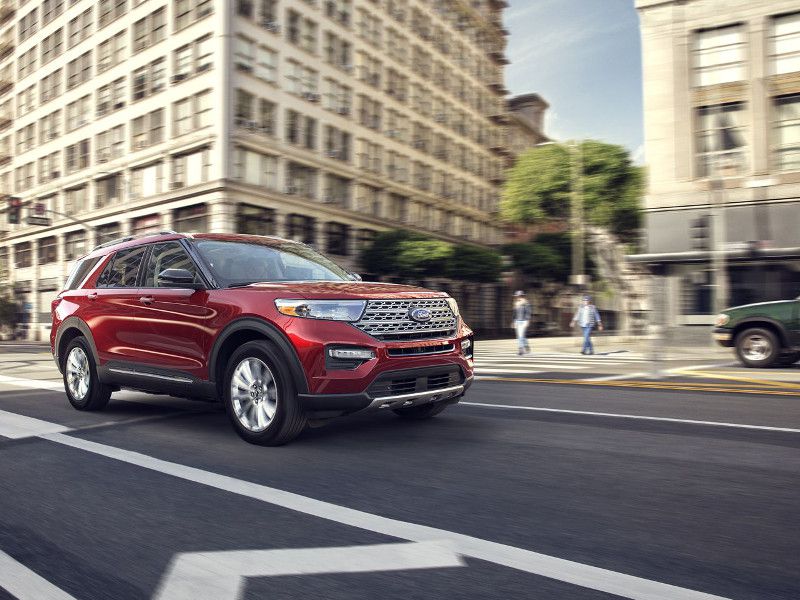
Photo by Ford